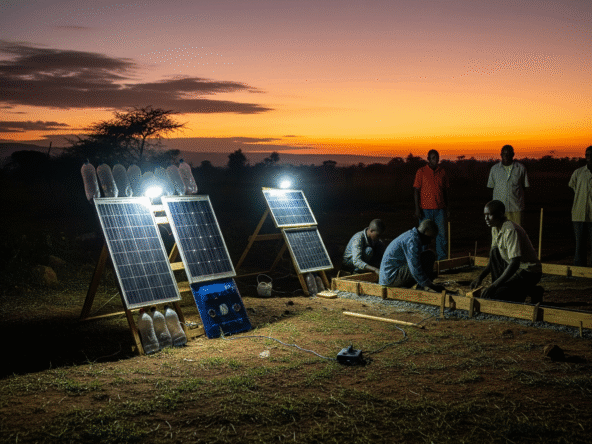Water security is a top priority for many Kenyan homeowners. Whether you’re building a family home in Matuu, managing rental units in Joska, or developing a rural plot in Kisaju, installing a water storage tank early in your project helps avoid future inconveniences and supports essential daily needs.
This guide covers affordable water tank options, including sizes, materials, placement tips, and structural considerations to help you make the right decision for your home or investment property.
1. Why Every Home Needs a Water Tank
Inconsistent water supply is common in many Kenyan neighborhoods. A water tank provides:
- A reliable water source during shortages
- Cost savings from bulk water purchases
- Cleaner water when combined with filtration
- Water access for flushing toilets, cleaning, or irrigation
For more plumbing and water-saving tips, see Water-Saving Fixtures and Plumbing Tips.
2. Choosing the Right Tank Size
| Household Size | Recommended Capacity | Typical Application |
|---|---|---|
| 1–2 people | 500–1,000 liters | Bedsitters, studio units |
| 3–5 people | 2,000–3,000 liters | Small families, rental compounds |
| 6–10 people | 5,000–10,000 liters | Full homes with gardens or extra use |
Water tanks are especially important for homes with septic systems, which require water for flushing and maintenance.
3. Types of Tank Materials
| Material | Advantages | Disadvantages |
|---|---|---|
| Plastic (HDPE) | Affordable, light, easy to install | Can wear out under harsh sunlight |
| Concrete | Long-lasting, suitable for underground | Higher installation cost |
| Steel (coated) | Durable and good for large capacity | Risk of rust if coating fails |
Plastic tanks remain the most practical choice for most low- to mid-income homes across Kenya.
4. Ground vs. Underground Installation
Above-Ground Tanks
- Easy to install and maintain
- Affordable and accessible
- May take up space and are exposed to sun
Underground Tanks
- Save compound space
- Keep water cooler for longer
- Require skilled labor and higher initial cost
Most homeowners opt for above-ground tanks mounted on raised stands for simplicity and better gravity flow.
5. Tank Stand Options and Costs
Elevating a tank improves water pressure and reduces the need for a pump.
| Stand Type | Estimated Cost | Benefits |
|---|---|---|
| Timber frame | KSh 3,000–5,000 | Low-cost, suitable for small tanks |
| Metal frame | KSh 10,000+ | Durable, good for larger storage units |
| Concrete column | KSh 15,000+ | Permanent and stable |
To avoid flooding around the tank, be sure to manage water runoff—see Construction Site Drainage Planning.
6. Best Tank Placement Practices
To make the most of your tank, place it:
- Close to kitchens and bathrooms for easy plumbing
- On elevated ground to support gravity-fed flow
- Away from soak pits or septic tanks to prevent contamination
Consider harvesting rainwater from roofs during rainy seasons. This is especially useful in counties like Kajiado, Meru, and Thika. Learn more in Green Building Practices in Kenya.
Water storage tanks are not just for emergencies they are a fundamental part of sustainable housing in Kenya. A 1,000 to 3,000-liter tank and basic stand can be installed for less than KSh 20,000, making it one of the most affordable and impactful additions to your home.
If you’re building for your family, tenants, or resale, water access should be planned from day one.
Explore More:

